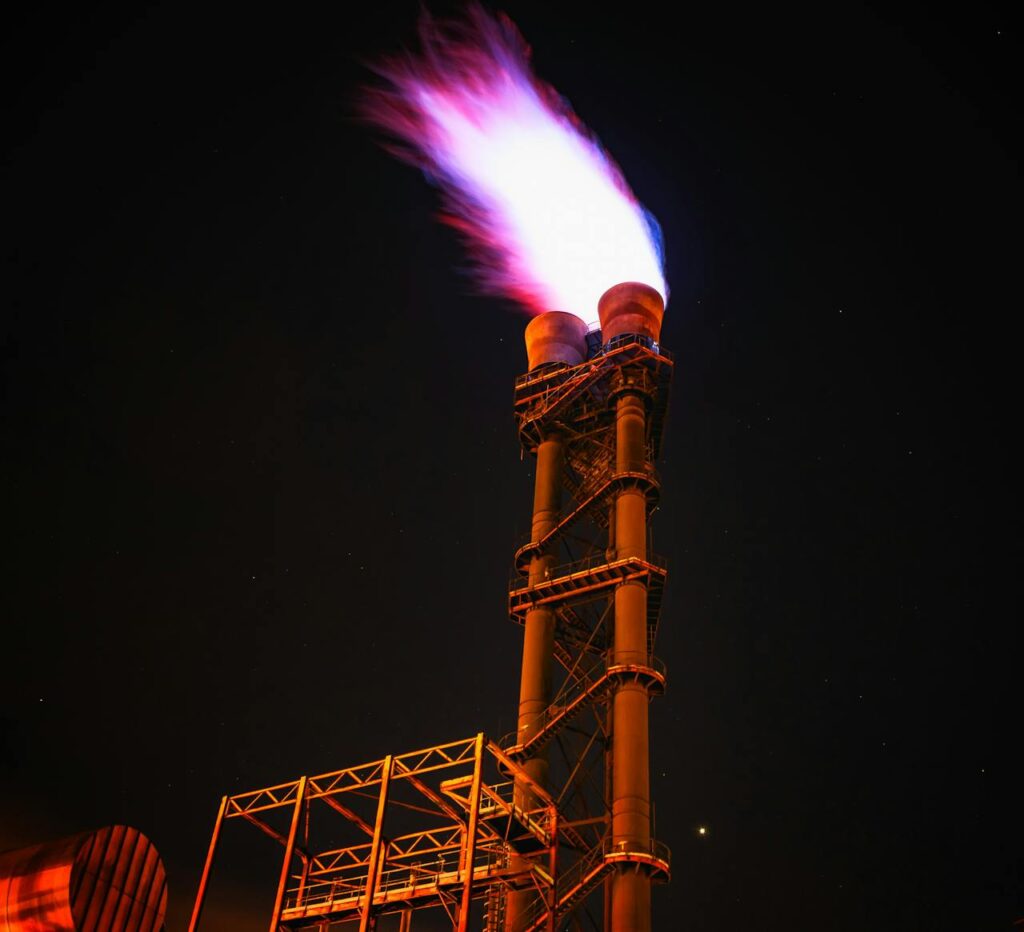
Explore & Play
Discover interesting topics and solve the accompanying crossword puzzle.
Gas Crossword | Gases and Combustion Science
Table of Contents
Before diving into the article, we invite you to play the Gas crossword for an engaging introduction to the topic. If you’re already familiar with the subject, the crossword will enhance your understanding. However, if you’re new to the topic, feel free to read the article first and then return to tackle the crossword for a deeper knowledge experience. Enjoy!
Gas Crossword
You can either fill in the crossword puzzle directly on this page or click the button in the bottom right corner to print it for free.

The Science of Combustion: Gases in Action
Combustion is a fundamental process that powers much of our modern world, and understanding the gases involved is essential for both safety and efficiency. From the simple act of cooking to complex industrial applications, gases play a critical role in energy production. This article will explore the intricacies of combustion, its essential components, and the implications for our daily lives. Additionally, we’ll briefly mention a crossword puzzle designed to enhance your knowledge of the gases discussed here.
1. Understanding Combustion
At its core, combustion is a chemical reaction that releases energy in the form of heat and light. This exothermic reaction typically occurs when a fuel reacts with an oxidant, often oxygen. It can be categorized into two main types: complete and incomplete combustion.
Complete combustion occurs when there is enough oxygen for the fuel to react entirely, producing carbon dioxide and water as byproducts. In contrast, incomplete combustion takes place when there is insufficient oxygen, leading to the production of carbon monoxide, soot, and other harmful substances. Understanding these processes is crucial, as they affect energy efficiency and environmental impact.
2. The Role of Gases in Combustion
Various gases play critical roles in the combustion process, each contributing uniquely to energy production. Understanding these gases is essential for optimizing combustion efficiency and minimizing environmental impact.
2.1 Common Combustible Gases
Among the most widely used gases for combustion are propane, butane, and methane.
Propane is a highly versatile gas, often found in portable fuel tanks for outdoor grills and as a heating source in homes. It burns cleanly, producing a high energy output with minimal emissions. Propane is particularly popular in areas where natural gas is not available, making it a crucial energy source for many households and businesses.
Butane, similar to propane, is commonly used in lighters and portable stoves. Its ability to vaporize easily allows for quick ignition, making it ideal for camping and outdoor cooking. However, butane’s use is often limited to warmer climates since it can become less effective in colder temperatures.
Methane, the main component of natural gas, is used extensively in residential heating, cooking, and electricity generation. Methane is valued for its efficiency and lower carbon footprint compared to other fossil fuels. When burned, it primarily produces carbon dioxide and water, making it one of the cleaner fossil fuels available.
2.2 Oxygen: The Essential Element
Oxygen is the lifeblood of combustion, enabling the process to occur. As an oxidizing agent, oxygen reacts with fuels to release energy, which is essential for sustaining combustion. The availability of oxygen directly influences the efficiency and completeness of the combustion reaction.
In complete combustion, ample oxygen allows for the full conversion of fuel into carbon dioxide and water. This reaction is not only more efficient but also produces fewer harmful byproducts. Conversely, when there is a limited supply of oxygen, incomplete combustion occurs. This leads to the production of carbon monoxide, soot, and other toxic substances, which can pose serious health risks and contribute to environmental pollution.
The balance of oxygen and fuel is crucial in various applications, from industrial processes to household heating. In industrial settings, controlled environments are often created to optimize oxygen levels, ensuring maximum efficiency and minimal emissions. For residential use, maintaining appliances and ensuring proper ventilation can help achieve more complete combustion, thereby improving safety and reducing pollutants.
3. The Chemistry of Combustion Reactions
The science behind combustion involves complex chemical reactions that transform reactants into products, releasing energy in the process. By understanding these reactions, we gain insight into the efficiency and environmental impact of various fuels.
3.1 Chemical Equation of Combustion
At its most basic level, combustion can be represented by a chemical equation. The general form of a combustion reaction involves a hydrocarbon fuel reacting with oxygen to produce carbon dioxide and water. For example, the combustion of methane can be illustrated as follows:
CH4+2O2→CO2+2H2O
In this equation, one molecule of methane (CH₄) reacts with two molecules of oxygen (O₂) to yield one molecule of carbon dioxide (CO₂) and two molecules of water (H₂O). This equation highlights the fundamental components of combustion: the fuel, the oxidizer (oxygen), and the products.
Understanding this chemical equation is crucial for determining the stoichiometry of combustion reactions, which informs us about the exact amounts of fuel and oxygen required for complete combustion. This knowledge is essential for optimizing fuel use in various applications, from engines to industrial burners.
3.2 Emissions and Byproducts
Combustion is not without its byproducts, many of which can have significant environmental impacts. When combustion occurs, the ideal reaction would produce only carbon dioxide and water. However, real-world conditions often lead to the formation of various emissions.
Carbon Dioxide (CO₂): As a greenhouse gas, carbon dioxide is the primary byproduct of complete combustion. While it is a natural component of the atmosphere, excessive CO₂ emissions from human activities contribute to climate change. This has led to increased scrutiny of combustion processes and a push for cleaner energy alternatives.
Carbon Monoxide (CO): Incomplete combustion, often due to insufficient oxygen, results in the production of carbon monoxide, a colorless and odorless gas that is highly toxic. Carbon monoxide binds with hemoglobin in the blood more effectively than oxygen, leading to potential poisoning. Understanding the conditions that lead to incomplete combustion is vital for improving safety and efficiency in gas usage.
Particulate Matter (PM): In some combustion processes, particularly those involving solid fuels, particulate matter can be released. These tiny particles can penetrate deep into the lungs and cause respiratory issues, making it essential to control emissions in industrial settings.
Nitrogen Oxides (NOx): These compounds are formed when nitrogen in the air reacts at high temperatures during combustion. NOx emissions contribute to the formation of smog and acid rain, posing environmental and health risks. Technologies aimed at reducing NOx emissions are critical for cleaner combustion processes.
4. Combustion in Everyday Applications
Combustion is integral to many aspects of daily life, providing the energy we need for cooking, heating, transportation, and industrial processes. Understanding how combustion functions in these applications helps us appreciate its importance and manage its use responsibly.
4.1 Fuels for Cooking and Heating
Combustion is perhaps most familiar to us in the kitchen and our heating systems.
Cooking Fuels: Gases such as propane and natural gas are commonly used for cooking in households. Propane, stored in tanks, is often favored for outdoor grilling due to its portability and high energy output. It burns cleanly and heats quickly, making it an ideal choice for preparing meals. Natural gas, typically delivered via pipelines, is prevalent in many homes for stoves and ovens. Its efficiency and lower emissions compared to other fossil fuels make it a popular choice. Understanding the combustion characteristics of these fuels allows consumers to optimize their cooking practices, ensuring both safety and efficiency.
Heating Applications: In residential and commercial buildings, gas furnaces often rely on natural gas for heating. These systems work by igniting the gas to produce heat, which is then circulated throughout the space. The efficiency of these systems can be improved by ensuring proper maintenance and adequate ventilation, which helps facilitate complete combustion and minimize harmful emissions. Additionally, advancements in technology, such as condensing boilers, have improved the energy efficiency of heating systems, further reducing their environmental impact.
4.2 Industrial Applications
In industrial settings, combustion is crucial for a wide range of manufacturing and energy production processes.
Combustion in Manufacturing: Many industries rely on combustion for processes such as metalworking, glass production, and chemical manufacturing. For example, acetylene is commonly used in welding applications, providing the high temperatures necessary for joining metals. Understanding the specific combustion characteristics of various gases allows industries to select the most suitable fuels for their processes, optimizing performance and safety.
Electricity Generation: Natural gas turbines are increasingly utilized in power plants to generate electricity. These turbines operate by burning natural gas to produce hot gases that spin a turbine, converting thermal energy into mechanical energy. The efficiency of these systems can significantly reduce greenhouse gas emissions compared to traditional coal-fired power plants. The transition to natural gas for electricity generation is a crucial step in reducing the carbon footprint of energy production.
4.3 Transportation and Fuels
Combustion is also a fundamental component of transportation, with various fuels powering vehicles, ships, and airplanes.
Automotive Fuels: Gasoline and diesel are the primary fuels used in internal combustion engines. These fuels undergo combustion to generate the power necessary for vehicle movement. The efficiency of combustion engines can be improved through regular maintenance, proper fuel selection, and advancements in engine design. Additionally, the development of alternative fuels, such as biodiesel and ethanol, aims to reduce emissions and increase sustainability in the transportation sector.
Aviation Fuels: In aviation, jet fuel is used to power aircraft engines. The combustion of jet fuel produces the thrust necessary for flight. Modern aircraft are designed to maximize fuel efficiency, minimizing emissions while maintaining performance. Understanding the combustion process in aviation is critical for addressing environmental concerns related to air travel and developing more sustainable aviation fuels.
5. Safety and Risks Associated with Combustion
While combustion is essential for many everyday applications, it also poses significant safety risks if not properly managed. Understanding these risks is crucial for preventing accidents and ensuring the safe use of combustible fuels.
5.1 Fire Hazards
One of the most immediate dangers associated with combustion is the risk of fire.
Ignition Sources: Combustible gases, such as propane and natural gas, can ignite if exposed to an open flame, spark, or high heat. For example, cooking appliances, heating systems, and outdoor grills must be monitored closely to prevent accidental ignition. Even small leaks in gas lines can create hazardous situations, as gas accumulates and becomes more susceptible to ignition.
Fire Prevention Measures: To mitigate fire risks, proper safety protocols must be established. This includes ensuring adequate ventilation to disperse any leaked gas and regularly inspecting appliances for signs of wear or malfunction. Installing smoke detectors and gas leak detectors can provide early warnings, allowing for prompt action in the event of an emergency. Additionally, educating household members and employees about fire safety measures can significantly reduce the likelihood of combustion-related incidents.
5.2 Carbon Monoxide Poisoning
Carbon monoxide (CO) is a colorless, odorless gas produced during incomplete combustion.
Health Risks: Exposure to carbon monoxide can be extremely dangerous, as it interferes with the body’s ability to transport oxygen in the bloodstream. Symptoms of CO poisoning include headaches, dizziness, confusion, and, in severe cases, loss of consciousness or death. Vulnerable populations, such as children and the elderly, are particularly at risk.
Preventative Measures: To combat the risk of carbon monoxide poisoning, it is vital to ensure proper ventilation in spaces where combustion occurs. Regular maintenance of gas appliances is essential to minimize incomplete combustion and the production of CO. Installing carbon monoxide detectors can provide an added layer of safety, alerting occupants to dangerous levels of the gas before symptoms arise.
5.3 Environmental Impact
The combustion process also poses significant environmental risks, contributing to air pollution and climate change.
Air Quality Concerns: The byproducts of combustion, including carbon dioxide, nitrogen oxides, and particulate matter, can adversely affect air quality. These emissions can lead to respiratory issues, cardiovascular diseases, and other health problems in exposed populations. Communities near industrial plants or high-traffic areas often experience elevated pollution levels, necessitating stringent regulations to control emissions.
Climate Change: As a major source of greenhouse gas emissions, combustion plays a significant role in climate change. Reducing reliance on fossil fuels and improving combustion efficiency are crucial steps in addressing this global challenge. Transitioning to cleaner energy sources, such as renewables, is essential for minimizing the environmental impact of combustion processes.
5.4 Combustion-Related Accidents
Combustion processes can lead to accidents beyond fires and poisonings, including explosions.
Explosive Risks: Gas leaks can result in explosive atmospheres, especially in enclosed spaces. If a gas leak accumulates and reaches a certain concentration, even a small spark can trigger a catastrophic explosion. Industrial settings, where large volumes of flammable gases are present, must implement strict safety measures to prevent such incidents.
Safety Protocols: To prevent combustion-related accidents, industries must adhere to rigorous safety protocols. This includes regular inspections of gas lines, proper storage of flammable materials, and employee training on emergency response procedures. Adopting safety technologies, such as automatic shut-off systems, can further enhance safety in high-risk environments.
6. Environmental Impact of Combustion
The environmental consequences of combustion are profound and far-reaching, affecting air quality, climate change, and ecosystems. As societies increasingly rely on combustion for energy and industry, it becomes imperative to understand and mitigate its environmental impact.
6.1 Air Pollution
Combustion processes release various pollutants into the atmosphere, contributing significantly to air quality deterioration.
Particulate Matter (PM): One of the most concerning pollutants is particulate matter, which consists of tiny particles suspended in the air. These particles can originate from incomplete combustion of fossil fuels and biomass. PM can penetrate deep into the lungs, leading to respiratory issues, cardiovascular diseases, and premature mortality. The fine particulate matter (PM2.5) is particularly harmful, as it can enter the bloodstream and cause systemic health effects.
Nitrogen Oxides (NOx): Another major pollutant produced during combustion is nitrogen oxides, which are formed when nitrogen in the air reacts with oxygen at high temperatures. NOx emissions contribute to the formation of ground-level ozone and smog, which can cause respiratory problems and other health issues. Moreover, NOx can lead to the acidification of water bodies, harming aquatic ecosystems.
Volatile Organic Compounds (VOCs): These compounds, which are released during the combustion of fuels, can react with sunlight to form ground-level ozone, a key component of smog. VOCs can come from vehicle emissions, industrial processes, and even household products. Reducing VOC emissions is critical for improving air quality and protecting public health.
6.2 Greenhouse Gas Emissions
Combustion is a significant source of greenhouse gases (GHGs), primarily carbon dioxide (CO₂), which contribute to climate change.
Carbon Dioxide (CO₂): The burning of fossil fuels for energy is the largest contributor to CO₂ emissions globally. As CO₂ accumulates in the atmosphere, it enhances the greenhouse effect, leading to global warming. The consequences of climate change are profound, including rising sea levels, increased frequency of extreme weather events, and disruptions to ecosystems and agriculture.
Methane Emissions: While combustion itself primarily produces CO₂, methane (CH₄) is a potent greenhouse gas released during the extraction and transportation of fossil fuels. Methane has a much greater heat-trapping ability than CO₂, making it a significant concern for climate change. Efforts to reduce methane emissions, particularly from natural gas systems, are crucial for climate mitigation.
6.3 Resource Depletion
The reliance on combustion for energy raises concerns about resource depletion, particularly of fossil fuels.
Fossil Fuel Dependency: The extraction and use of fossil fuels not only contribute to greenhouse gas emissions but also lead to the depletion of non-renewable resources. As reserves diminish, the environmental impacts of extraction, such as habitat destruction and water pollution, become more pronounced. Transitioning to renewable energy sources is essential for reducing this dependency and promoting sustainability.
Biodiversity Loss: The infrastructure needed for fossil fuel extraction and transportation can disrupt ecosystems and lead to loss of biodiversity. Habitats are often destroyed to make way for drilling sites, pipelines, and refineries. Protecting natural habitats and promoting sustainable land use practices are vital for preserving biodiversity in the face of ongoing resource extraction.
6.4 Mitigation Strategies
Addressing the environmental impact of combustion requires concerted efforts from individuals, industries, and governments.
Transition to Cleaner Fuels: Shifting from fossil fuels to cleaner energy sources, such as wind, solar, and hydroelectric power, can significantly reduce the environmental impact of combustion. Encouraging the use of biofuels and hydrogen as alternative energy sources can also help lower emissions.
Improving Combustion Efficiency: Enhancing the efficiency of combustion processes can reduce fuel consumption and emissions. Technologies such as combined heat and power (CHP) systems, which capture waste heat for additional energy production, can optimize energy use.
Regulatory Measures: Governments play a critical role in mitigating the environmental impact of combustion through regulations and policies. Implementing stricter emission standards, promoting renewable energy initiatives, and supporting research and development in cleaner technologies are essential steps in this process.
7. Future of Combustion Technology
Advancements in technology are shaping the future of combustion processes and their applications.
7.1 Innovations in Fuel Efficiency
New technologies aim to maximize fuel efficiency while minimizing emissions. For example, improvements in combustion engines and the development of cleaner fuels contribute to more sustainable energy practices. Additionally, innovative approaches in gas turbine design are enhancing energy conversion processes.
7.2 The Role of Research
Ongoing research is critical for developing cleaner combustion technologies. Scientists are exploring methods to improve combustion efficiency, reduce harmful emissions, and integrate renewable energy sources. This research is essential for paving the way for a more sustainable future.
Now that you’ve learned about the fascinating world of combustion, take a moment to engage your mind further by playing the crossword puzzle! It’s a fun way to reinforce your knowledge of the gases discussed in this article.
Share to...
I hope you enjoy the content.
Want to receive our daily crossword puzzle or article? Subscribe!
You may also be interested in
Share to…
Want to receive our daily crossword puzzle?
-
Jigsaw Puzzles
Charming Hamster Art Nouveau Jigsaw Puzzle 250 | 300 | 500 Pieces
kr 348,00 – kr 439,00Price range: kr 348,00 through kr 439,00 Select options This product has multiple variants. The options may be chosen on the product page -
Jigsaw Puzzles
Elegant Pig Zodiac Watercolor Jigsaw Puzzle 250 | 300 | 500 Brikker
kr 348,00 – kr 439,00Price range: kr 348,00 through kr 439,00 Select options This product has multiple variants. The options may be chosen on the product page -
Jigsaw Puzzles
Cozy Art Nouveau Cat Puzzle 250 | 300 | 500 Pieces
kr 348,00 – kr 439,00Price range: kr 348,00 through kr 439,00 Select options This product has multiple variants. The options may be chosen on the product page

















